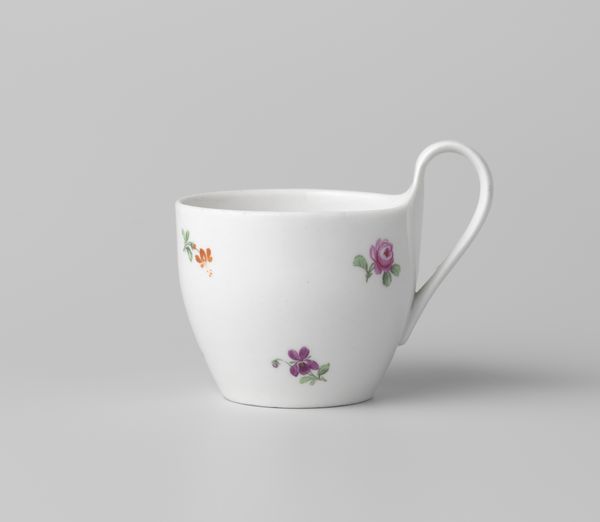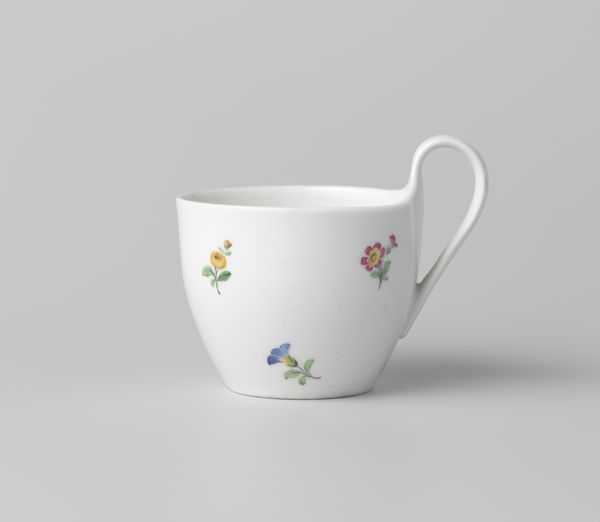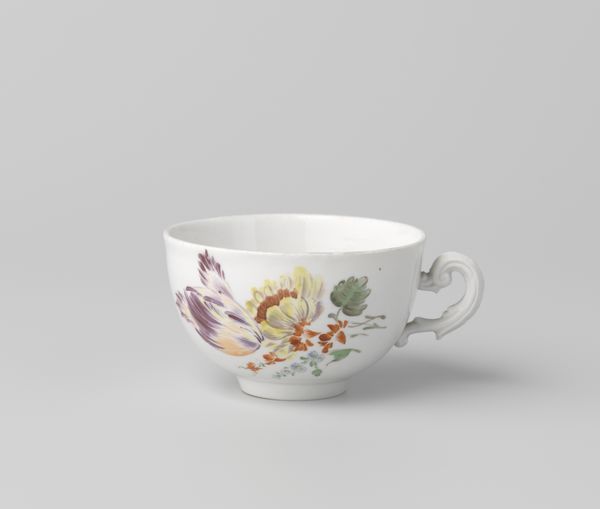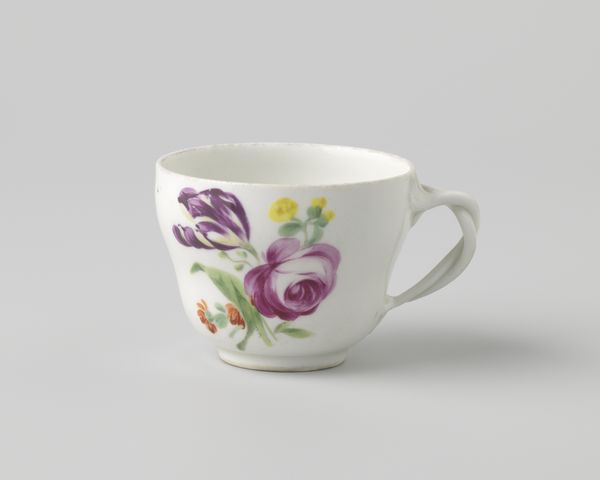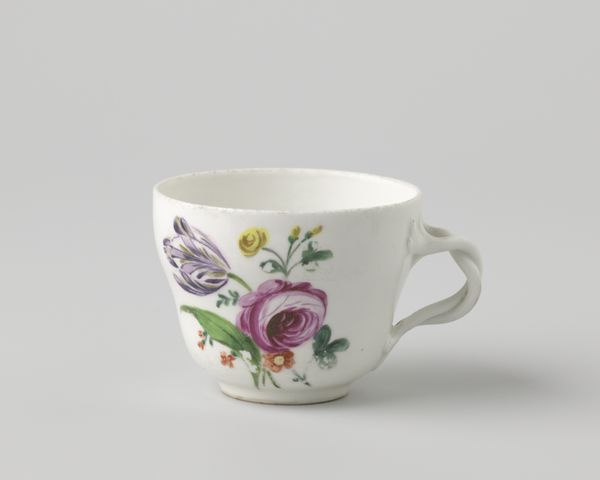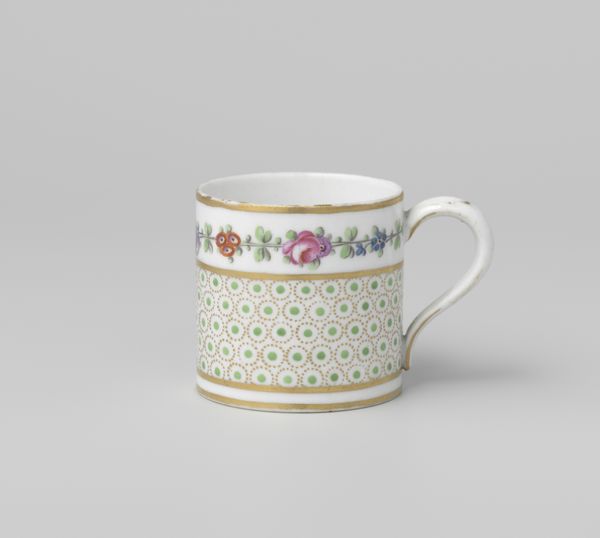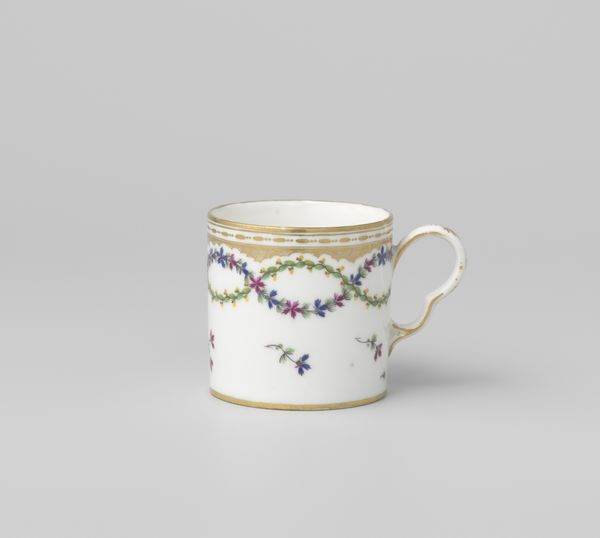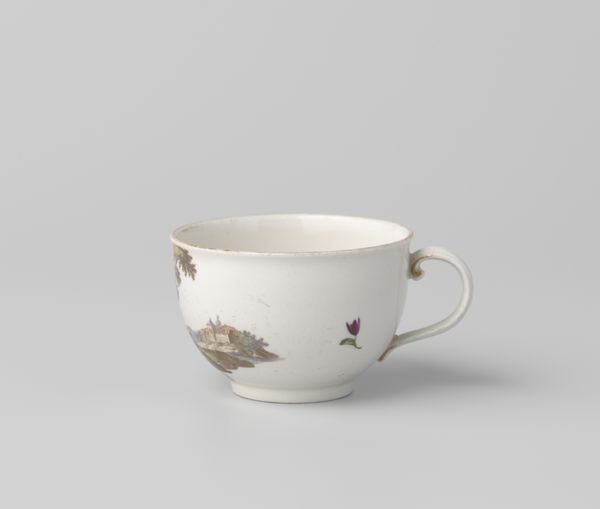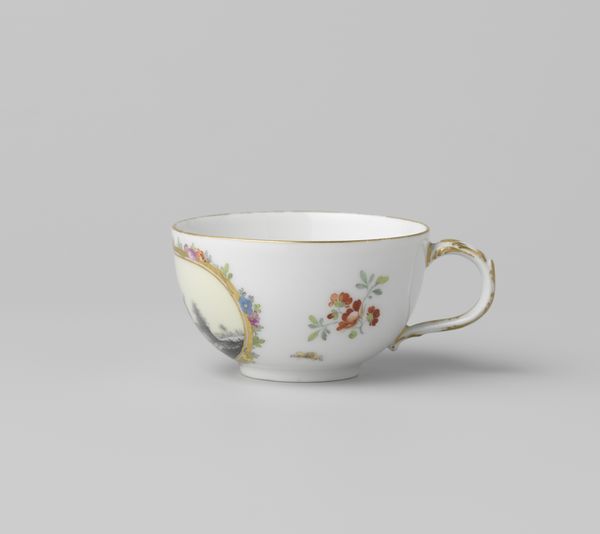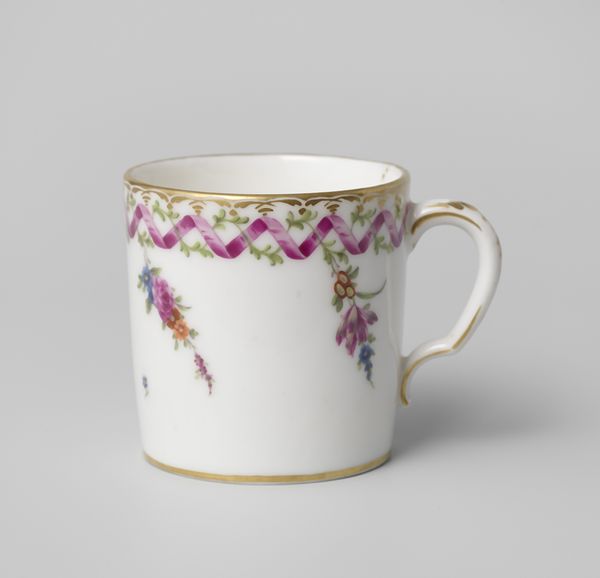
ceramic, porcelain, earthenware
#
product photograph merchandise
#
product studio photography
#
product promotion photography
#
cake food
#
ceramic
#
retro 'vintage design
#
porcelain
#
earthenware
#
food illustration
#
natural background
#
plain flat background
#
watercolour illustration
#
decorative-art
#
pale flat background
Dimensions: height 7.5 cm, diameter 7.2 cm, diameter 4.4 cm, width 9.3 cm
Copyright: Rijks Museum: Open Domain
Editor: So here we have "Cup with Flowers", made around 1849-1870 by the Königliche Porzellan Manufaktur. It's earthenware with a porcelain finish and delicate floral details. The floral detailing seems so delicate. What do you see when you look at this piece? Curator: What strikes me immediately is the method of production and the implications of material value in this context. Porcelain, a high-status material, combined with earthenware, a more common substance, shows a very clear social contrast. Look closely, it begs the question: Who would own such a thing and why combine such different elements? Editor: I hadn't thought of the materials themselves telling a story. What do you mean about who would own this? Curator: Well, porcelain was incredibly valuable and a sign of wealth, while earthenware was for the masses. So why create something mixing the two? It makes me consider the industrial processes used, perhaps striving to democratize luxury by using mixed materials. How was this made, and what labor was involved in crafting each component? Editor: That's really fascinating. The decoration itself seems simple, not overly opulent. Does that relate? Curator: Absolutely. The minimal floral design challenges our notions of preciousness. Are they elevating the mundane through meticulous craft, or are they diluting luxury for a wider market? Were these items, and the materials used determined by market pressures of the era and growing consumerism, which is different from older traditions of nobility. Editor: I never considered the socio-economic context so directly related to materials used. I initially saw a simple, pretty object. Curator: Exactly, the pretty façade can mask deeper connections to labor, production, and consumer culture! I will now look differently at porcelain, recognizing its intrinsic historical context.
Comments
No comments
Be the first to comment and join the conversation on the ultimate creative platform.
